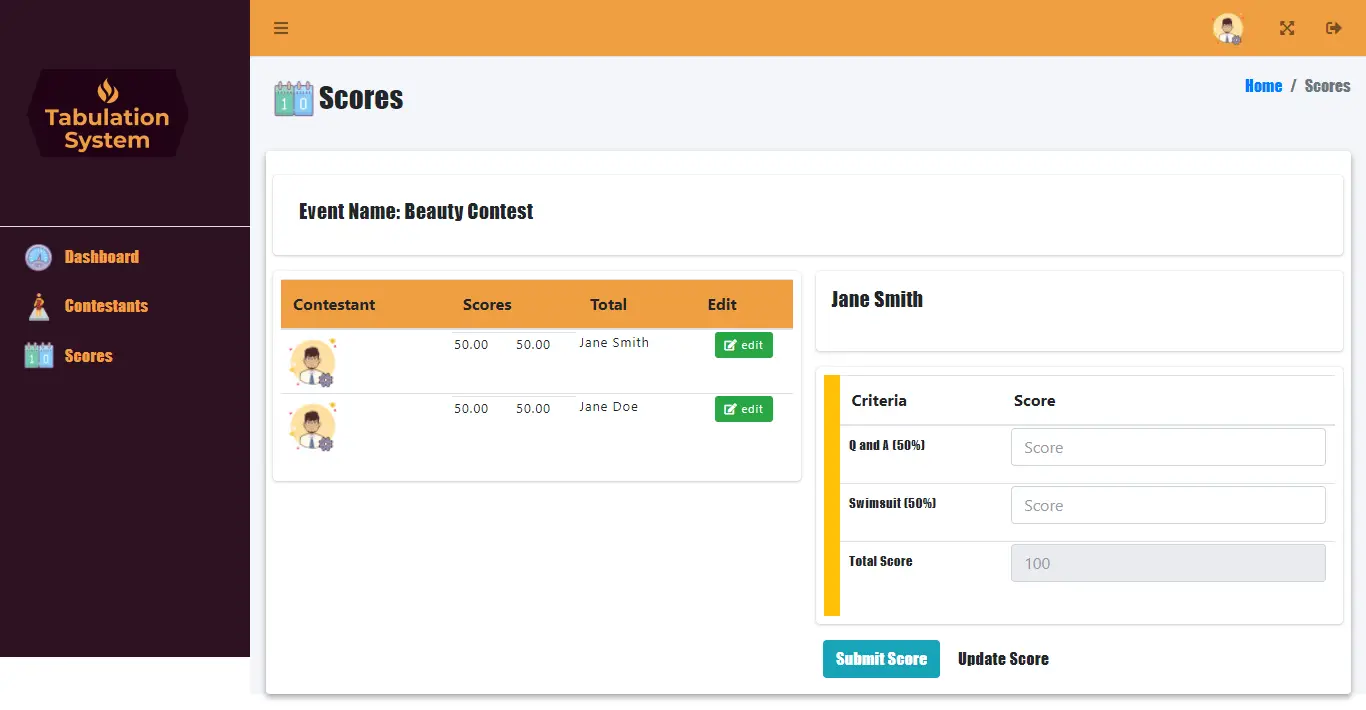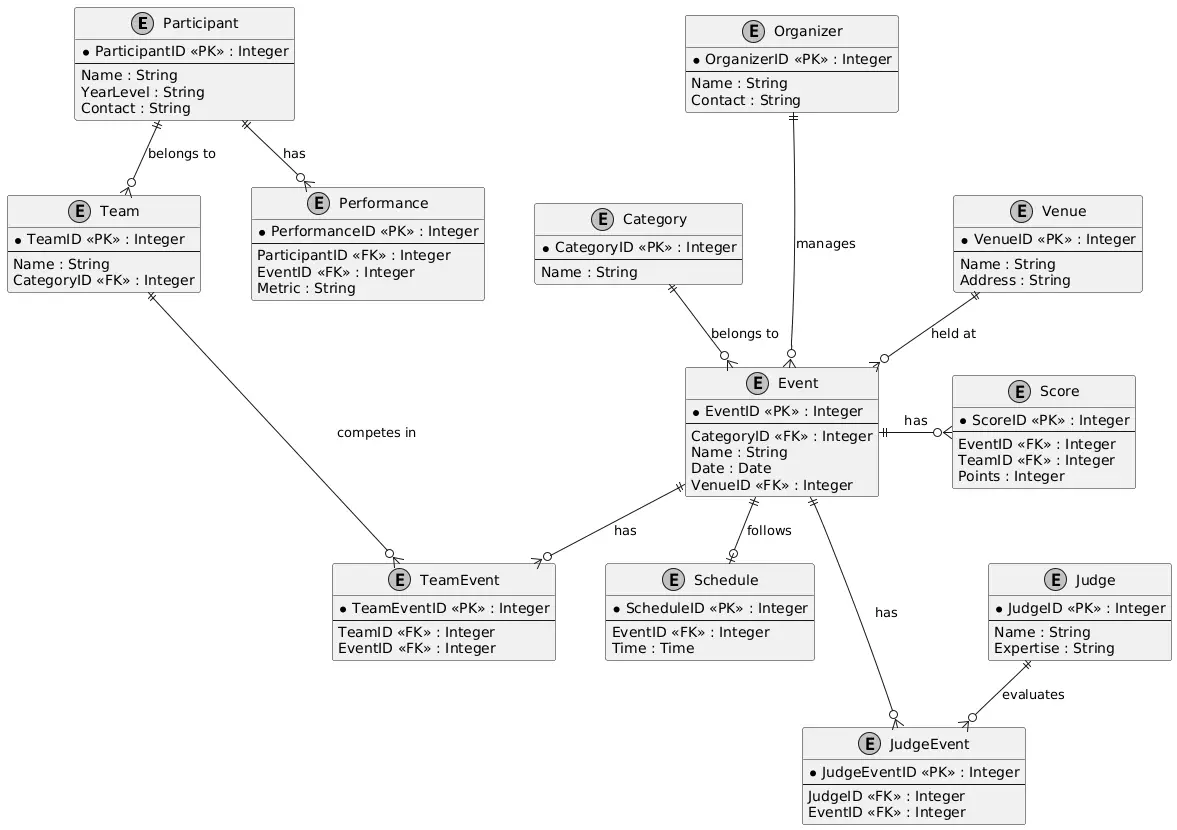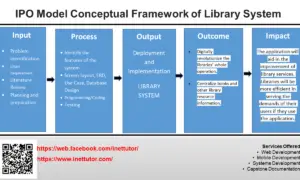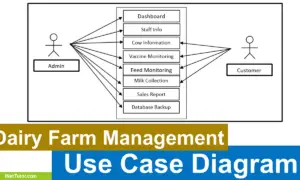Intramurals Tallying System Entity Relationship Diagram
Introduction
Table of Contents
An intramurals tallying system manages scores, participant details, and event schedules for sports and cultural events in schools or communities, ensuring accurate tracking and fair competition. Effective data management is crucial for organizing diverse activities like basketball games, dance contests, and quiz bees, requiring robust database designs. An Entity Relationship Diagram (ERD) serves as a visual blueprint for such databases, mapping entities, attributes, and relationships to structure complex intramural data logically. ERDs enable developers to create scalable systems that support real-time updates and analytics for event outcomes.
This post guides readers in understanding and designing an ERD for an intramurals tallying system, covering both sports and cultural events. It provides a step-by-step process, from identifying entities to visualizing relationships, tailored to intramural needs. The target audience includes database designers, developers, students, and event organizers interested in data modeling for community events. Whether you’re building a system for a university intramurals or studying database design, this guide offers practical insights. By exploring key components and best practices, readers will learn to create ERDs that power efficient, accurate tallying systems, addressing challenges like data consistency and event diversity.

Overview of the Project
An intramurals tallying system oversees sports and cultural events, managing participants, teams, events, scores, and schedules. Key components include tracking participant profiles, team formations, event types (e.g., soccer, singing contests), and results. The system handles varied data, such as numerical scores, textual event descriptions, and temporal schedules, while ensuring real-time updates for live events.
Data management challenges include handling diverse event formats (sports vs. cultural), ensuring fairness in scoring, and scaling for large intramural programs with hundreds of participants. ERDs address these by organizing data into entities and relationships, minimizing redundancy and optimizing queries. For example, a university intramurals might use a system to track basketball scores, debate competition rankings, and dance event winners. The ERD would map participants to teams and events to scores, ensuring seamless data integration.
This structure supports features like live leaderboards, event schedules, and performance analytics. By addressing data challenges, ERDs enable reliable, user-friendly systems for organizers, participants, and spectators, making them essential for intramural event management.
Key Concepts of ER Diagrams
An Entity Relationship Diagram (ERD) is a visual tool for database design, comprising entities (e.g., Participant, Event), attributes (e.g., ParticipantID, EventDate), and relationships (e.g., Participant COMPETES_IN Event). Primary keys uniquely identify entities (e.g., EventID), while foreign keys link them (e.g., TeamID in Participant). These elements ensure data integrity and efficient querying.
In an intramurals tallying system, entities might include Participant, Team, Event, and Score. Attributes for Participant could be ParticipantID, Name, and YearLevel, while Event might have EventID, Name, and Type (sports/cultural). Relationships define interactions, like Participant BELONGS_TO Team or Event HAS Score. Cardinality (e.g., one-to-many) specifies connections, such as one Team having many Participants.
Example:
Entity: Participant
- ParticipantID (Primary Key)
- Name
- YearLevel
Relationship: Participant –BELONGS_TO–> Team (one-to-many).
This ensures accurate team rosters. By applying ERD concepts, developers can model intramural data to support features like score tracking or event scheduling, ensuring flexibility for both sports and cultural activities.
Designing the ER Diagram for Intramurals Tallying System
Creating an ERD for an intramurals tallying system involves a structured approach to model data for sports and cultural events. Below are the steps:
Step 1: Identify Entities
Key entities include:
- Participant: Tracks individuals competing.
- Team: Represents groups in team-based events.
- Event: Stores event details (sports/cultural).
- Score: Records event outcomes.
- Category: Defines event types (e.g., sports, cultural).
- Organizer: Tracks event coordinators.
- Venue: Stores event locations.
- Performance: Logs individual/team metrics.
- Schedule: Manages event timings.
- Judge: Tracks event adjudicators.
Step 2: Define Attributes
Each entity has specific attributes:
- Participant: ParticipantID (PK), Name, YearLevel, Contact.
- Team: TeamID (PK), Name, CategoryID (FK).
- Event: EventID (PK), CategoryID (FK), Name, Date, VenueID (FK).
- Score: ScoreID (PK), EventID (FK), TeamID (FK), Points.
- Category: CategoryID (PK), Name (e.g., Sports, Cultural).
- Organizer: OrganizerID (PK), Name, Contact.
- Venue: VenueID (PK), Name, Address.
- Performance: PerformanceID (PK), ParticipantID (FK), EventID (FK), Metric (e.g., Goals, Rank).
- Schedule: ScheduleID (PK), EventID (FK), Time.
- Judge: JudgeID (PK), Name, Expertise.
Step 3: Establish Relationships
- Participant BELONGS_TO Team: One Team has many Participants (1:N).
- Team COMPETES_IN Event: Many Teams connect to many Events (M:N, via TeamEvent).
- Event HAS Score: One Event has many Scores (1:N).
- Event BELONGS_TO Category: One Category has many Events (1:N).
- Organizer MANAGES Event: One Organizer handles many Events (1:N).
- Event HELD_AT Venue: One Venue hosts many Events (1:N).
- Participant HAS Performance: One Participant has many Performances (1:N).
- Event FOLLOWS Schedule: One Schedule has one Event (1:1).
- Judge EVALUATES Event: Many Judges connect to many Events (M:N, via JudgeEvent).
Step 4: Specify Constraints
Primary keys (e.g., EventID) ensure unique identification. Foreign keys (e.g., CategoryID in Event) link entities. Cardinality enforces rules, like one Category to many Events. Junction tables (TeamEvent, JudgeEvent) handle many-to-many relationships.
Textual Description: The ERD centers on Event, linking to Team, Score, Category, Venue, Schedule, and Judge. Participant connects to Team and Performance, while Organizer manages Events.
ER Diagram Example

The ERD for an intramurals tallying system, designed in Draw.io, includes 10 entities: Participant, Team, Event, Score, Category, Organizer, Venue, Performance, Schedule, and Judge. Each entity has attributes, with primary keys (e.g., EventID) and foreign keys (e.g., CategoryID in Event) defined. Relationships include:
- Participant BELONGS_TO Team (1:N): Tracks team memberships.
- Team COMPETES_IN Event (M:N via TeamEvent): Records team participation.
- Event HAS Score (1:N): Stores results.
- Event BELONGS_TO Category (1:N): Classifies events as sports or cultural.
- Organizer MANAGES Event (1:N): Assigns coordinators.
- Event HELD_AT Venue (1:N): Specifies locations.
- Participant HAS Performance (1:N): Tracks metrics like goals or rankings.
- Event FOLLOWS Schedule (1:1): Sets timings.
- Judge EVALUATES Event (M:N via JudgeEvent): Assigns adjudicators.
Domain-specific nuances: The Category entity distinguishes sports (e.g., volleyball) from cultural events (e.g., poetry), ensuring flexible scoring logic. The Performance entity captures varied metrics, like goals in soccer or ranks in debates, supporting analytics. The TeamEvent junction table ensures accurate event-team pairings, vital for live updates. The ERD supports real-time features like leaderboards and schedules, with scalability for large intramurals like university festivals. Constraints ensure data integrity, preventing errors like duplicate scores or invalid venues. This ERD provides a robust foundation for an intramurals tallying system, enabling efficient management of diverse events.
PlantUML Script for Intramurals Tallying System ERD
@startuml Intramurals Tallying System ERD
' Entities
entity "Participant" {
* ParticipantID <<PK>> : Integer
--
Name : String
YearLevel : String
Contact : String
}
entity "Team" {
* TeamID <<PK>> : Integer
--
Name : String
CategoryID <<FK>> : Integer
}
entity "Event" {
* EventID <<PK>> : Integer
--
CategoryID <<FK>> : Integer
Name : String
Date : Date
VenueID <<FK>> : Integer
}
entity "Score" {
* ScoreID <<PK>> : Integer
--
EventID <<FK>> : Integer
TeamID <<FK>> : Integer
Points : Integer
}
entity "Category" {
* CategoryID <<PK>> : Integer
--
Name : String
}
entity "Organizer" {
* OrganizerID <<PK>> : Integer
--
Name : String
Contact : String
}
entity "Venue" {
* VenueID <<PK>> : Integer
--
Name : String
Address : String
}
entity "Performance" {
* PerformanceID <<PK>> : Integer
--
ParticipantID <<FK>> : Integer
EventID <<FK>> : Integer
Metric : String
}
entity "Schedule" {
* ScheduleID <<PK>> : Integer
--
EventID <<FK>> : Integer
Time : Time
}
entity "Judge" {
* JudgeID <<PK>> : Integer
--
Name : String
Expertise : String
}
' Junction Tables
entity "TeamEvent" {
* TeamEventID <<PK>> : Integer
--
TeamID <<FK>> : Integer
EventID <<FK>> : Integer
}
entity "JudgeEvent" {
* JudgeEventID <<PK>> : Integer
--
JudgeID <<FK>> : Integer
EventID <<FK>> : Integer
}
' Relationships
Participant ||--o{ Team : belongs to
Team ||--o{ TeamEvent : competes in
Event ||--o{ TeamEvent : has
Event ||--o{ Score : has
Category ||--o{ Event : belongs to
Organizer ||--o{ Event : manages
Venue ||--o{ Event : held at
Participant ||--o{ Performance : has
Event ||--o| Schedule : follows
Judge ||--o{ JudgeEvent : evaluates
Event ||--o{ JudgeEvent : has
' Layout to avoid line intersections
hide empty members
skinparam monochrome true
skinparam nodesep 50
skinparam ranksep 50
' Positioning to prevent overlap
Participant -[hidden]d- Team
Event -[hidden]r- Score
Category -[hidden]u- Organizer
Venue -[hidden]l- Performance
Schedule -[hidden]r- Judge
TeamEvent -[hidden]d- JudgeEvent
@enduml
This PlantUML script ensures a clear, non-overlapping layout with labeled relationships and junction tables (TeamEvent, JudgeEvent) for many-to-many connections.
Best Practices for Intramurals Tallying System ER Diagrams
Designing effective ERDs for an intramurals tallying system requires precision. Normalize data to avoid redundancy, such as separating Participant and Performance entities to streamline metric tracking. Index frequently queried fields like Event.Date or Score.Points to optimize real-time leaderboards. Ensure scalability by structuring entities to handle diverse events, from sports to cultural, across large intramural programs.
Use clear naming conventions (e.g., EventID, TeamID) for readability and maintainability. Define precise relationships—use junction tables like TeamEvent for many-to-many relationships instead of direct links. Enforce constraints, such as foreign keys in Score, to prevent invalid data (e.g., scores for non-existent events). Accommodate event diversity by using the Category entity to differentiate scoring rules for sports vs. cultural events.
Avoid pitfalls like overcomplicating relationships—don’t link Judge directly to Team if JudgeEvent suffices. Avoid redundant data, like storing event names in Score, which increases update complexity. Test the ERD with sample queries to ensure it supports features like live results or schedule updates.
Recommended tools include MySQL Workbench for database integration, Lucidchart for collaborative diagramming, and ERDPlus for free ERD creation. Validate the ERD against scenarios like simultaneous events or last-minute changes. By following these practices, developers can create ERDs that power reliable, efficient intramurals tallying systems, ensuring accurate management of diverse events.
Real-World Applications
The ERD for an intramurals tallying system translates into a functional database powering platforms like university event management apps or community festival systems. It supports key features: real-time score updates, participant performance tracking, and event scheduling. For example, the Event-Score relationship enables live leaderboards, while the Participant-Performance link drives analytics for awards or rankings. The TeamEvent junction table ensures accurate team-event associations, crucial for tournament-style events.
Industries like education, community organizations, and event management rely on such ERDs. Tools like CampusGroups use similar database structures to manage university intramurals, while apps like Eventbrite leverage them for community festivals. The ERD’s scalability supports high-participation events, such as a college intramurals with hundreds of participants across sports and cultural activities. It also enables integrations with mobile apps for real-time updates or participant notifications.
A case study example is a university intramurals program using an ERD-based system to manage basketball games, debate competitions, and talent shows. The ERD ensures data integrity, preventing errors like duplicate scores, and supports features like automated rankings or event schedules. By structuring intramural data effectively, ERDs drive reliable, user-centric solutions for organizers, participants, and audiences, making them vital for event management technology.
Conclusion
This guide illustrates how an ERD simplifies data modeling for an intramurals tallying system, enabling efficient, scalable databases for sports and cultural events. By identifying entities like Participant, Event, and Performance, defining attributes, and establishing relationships, developers can build systems supporting live scoring, analytics, and scheduling. The PlantUML script and best practices provide a practical foundation for creating robust ERDs, while real-world applications highlight their impact in event management.
Readers are encouraged to experiment with tools like Draw.io to design their own ERDs or explore related domains like festival management systems. Share your feedback in the comments, check out our next post on database optimization, or visit resources like PostgreSQL’s documentation for deeper insights. Start modeling your intramurals tallying system’s database today and contribute to better event technology!
You may visit our Facebook page for more information, inquiries, and comments. Please subscribe also to our YouTube Channel to receive free capstone projects resources and computer programming tutorials.
Hire our team to do the project.


